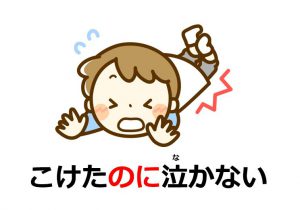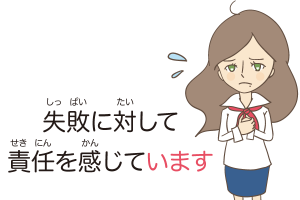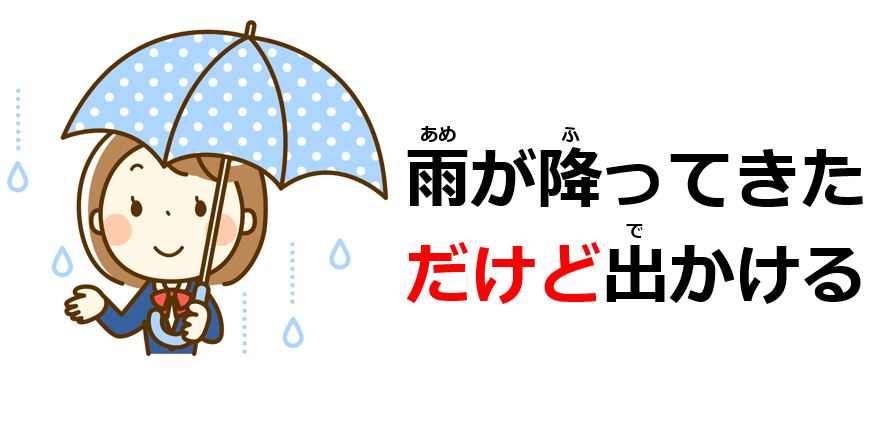This is the last lesson in the compound sentence section. By conjugating verbs, you can express various things such as sequential, parallel, and simultaneous actions. On the other hand, you can also express the same things by using conjunctions. In this lesson, you will learn some major conjunctions in Japanese.
Explanation for How Japanese Conjunctions Work
| Table of Contents Sequence: そして and それから Parallel: それに, そして, and それから Reasons: だから, なので, and そのため(に) Actual Conditions: すると Reverse Conditions: なのに, が, けど, けれど, けれども, and ところが |
You may treat this lesson as a review because we won’t introduce new grammar, but how to reword what you have learned by using conjunctions. Therefore, if you have difficulty understanding conjunctions, you may have to read the previous lessons once again. Conjunctions don’t have any conjugation and should be simple enough to master here.
Sequence: そして and それから
| ご飯を買って家に(帰った / 帰りました)。 |
| ご飯を(買った / 買いました)。そして、家に(帰った / 帰りました)。 |
そして and それから express sequences of events and are the counterpart to …て. Both of the above examples have the same meaning, which is “I bought a meal and went home.” However, …て sounds more natural when the length of the sentence is short.
In general, そして and それから are used in the same way. However, それから has another function, which is to express the phrase “since then.” The following example means “I came to Japan one year ago. Since then, I have been studying Japanese.”
| 1年前に日本に来ました。そして・それから、日本語を勉強しています。 |
Parallel: それに, そして, and それから
| 朝ご飯はごはんとみそ汁と魚(だ / です)よ。 |
| 朝ご飯はごはん、みそ汁、それに、魚(だ / です)よ。 |
それに, そして, and それから all have the same meaning and can make parallel lists. When you list nouns, the parallel marker と is equivalent. Both of the above examples mean “Breakfast is rice, miso soup, and fish.”
You have a case where actions are listed. In that case, the te-form is equivalent to the conjunctions それに, そして, and それから. The meaning in the example below is “My mother will cook, and my father will do the washing.”
| 母は料理をして、父は洗濯を(する / します)。 |
| 母は料理を(する / します)。そして、父は洗濯を(する / します)。 |
As you learned, …し also has the function of making a parallel list. Thus, you can replace it with one of the conjunctions それに, そして, or それから. The following examples mean “The teacher is tender and beautiful.”
| 先生は優しいし、綺麗(だ / です)。 |
| 先生は優しい(です)。それから、綺麗(だ / です)。 |
[adsense]
Reasons: だから, なので, and そのため(に)
| 疲れたから、家に(帰る / 帰ります)。 |
| (疲れた / 疲れました)。だから・なので、家に(帰る / 帰ります)。 |
だから and なので are the counterparts to …から and …ので. They take over the function and thus express the same meaning as the originals; both of the examples here mean “I got tired, so I will go home.”
…ために has the function of expressing causation. そのため(に) can express the same thing. However, as you learned, you need to drop に and cannot make requests, invitations, commands, or other such expressions in this context. The examples mean “Since there was a flood yesterday, [we are] closed today.”
| 昨日洪水があったため(に)、今日は休みです。 |
| 昨日洪水がありました。そのため(に)、今日は休みです。 |
Actual Conditions: すると
| 1月が来ると、急に寒く(なった / なりました)。 |
| 1月が(来た / 来ました)。すると、急に寒く(なった / なりました)。 |
すると works the same as …と when you introduce something that happened in the past. Both of the examples mean “January came, and then it suddenly got cold.”
Reverse Conditions: なのに, が, けど, けれど, けれども, and ところが
| お腹が空いたのに、食べ物が(ない / ありません)。 |
| お腹が空いた。なのに、食べ物が(ない / ありません)。 |
なのに is the counterpart to …のに. Both of them express reverse conditions with a nuance of complaint or surprise. The examples mean “Despite the fact that I’m hungry, there is no food.” Japanese people sometimes add それ like in それなのに. This is slightly more formal than なのに.
You can just use が, けど, けれど, and けれども as conjunctions, though we sometimes attach だ to them like in だけど. They can express reverse conditions without implying complaint and surprise, like “I’m hungry, but there is no food.” In this context, there are other conjunctions with the same meanings, which are でも and しかし. Keep in mind; they are very frequently used.
| お腹が空いたけど、食べ物が(ない / ありません)。 |
| お腹が空いた。(だ)けど、食べ物が(ない / ありません)。 |
ところが is a similar conjunction to なのに. ところが also expresses reverse conditions and cannot be used with the speaker’s feelings, such as volition, invitations, requests, judgments, etc. The difference is that ところが implies unexpected results.
| お腹が空いた。なのに、食べ物が(ない / ありません)。 => Implies complaint or surprise |
| お腹が空いた。ところが、食べ物が(ない / ありません)。 => Implies unexpectedness |
With this following example, なのに is not suitable because the speaker just tells the fact and doesn’t complain. が, けど, けれど, and けれども might be better, but there is no implication. Here is the situation where ところが comes into play. You can express unexpected results.
| 日本人は時間に厳しいです。ところが、遅刻する人もいます。 Japanese people are punctual. However, there are also tardy people. |
Summary
| Sequence | そして, それから | And |
| Parallel | それに, そして, それから | And |
| Reasons | だから, なので, そのため(に) | Because, since, so |
| Actual Conditions | すると | And, then |
| Reverse Conditions (Complaint or Surprise) | (それ)なのに | But, however |
| Reverse Conditions (Plain) | が, けど, けれど, けれども | But, however |
| Reverse Conditions (Unexpected Results) | ところが | But, however |
Don’t follow the English translations, even though we have shown them in the table. English conjunctions such as “and” and “but” are very powerful. In Japanese, you have to choose a proper conjunction depending on the context. By understanding each characteristic, you will be able to naturally connect sentences. Anyway, this is the last lesson in the compound sentence section. Great job!

Reverse Conditions: …ても, …のに, and …が・けど・けれど・けれども

How to Express Various Targets: に対して, について, and にかかわる



